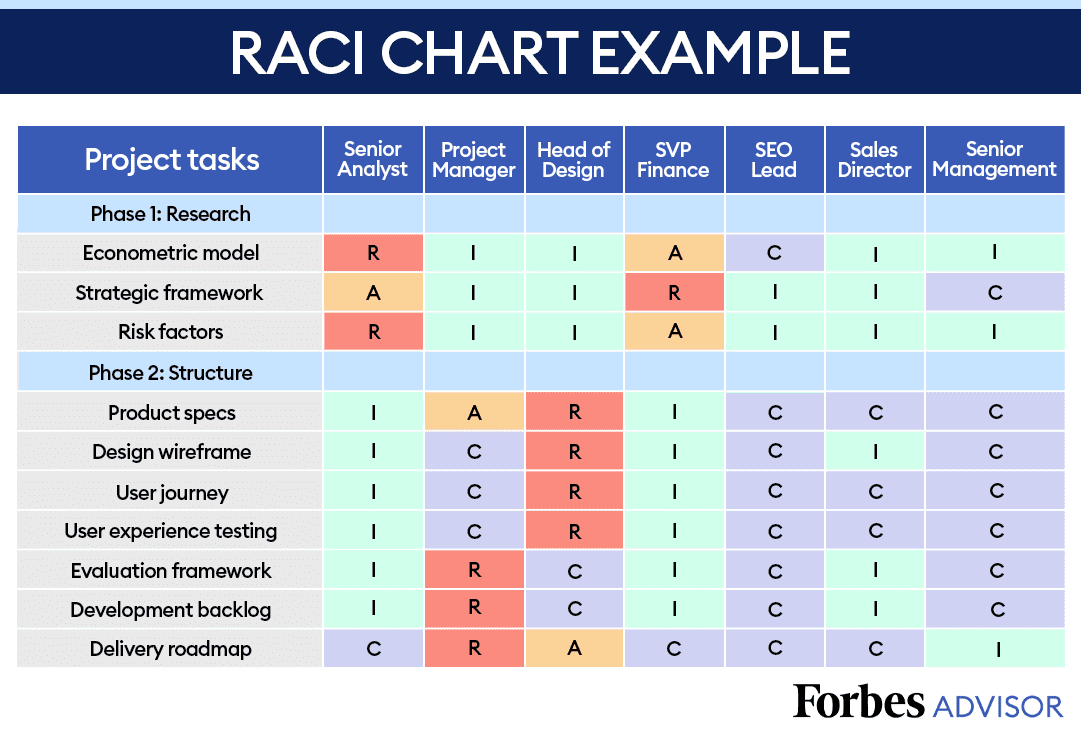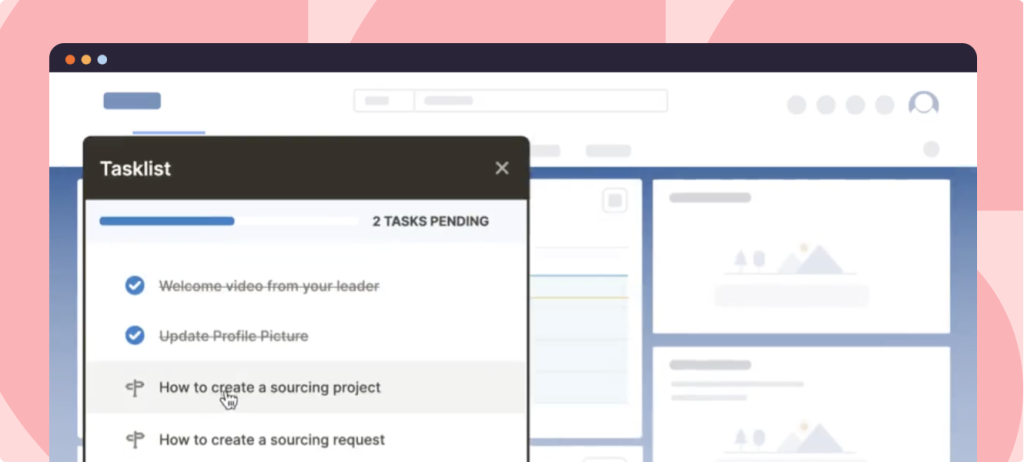Holding employees accountable is essential for creating a productive and successful workplace. Accountability ensures employees take ownership of their tasks, meet deadlines, and contribute meaningfully to the organization’s goals.
If an employee fails to meet their goals or the company’s expectations, it is up to the manager to hold that team member accountable. An excellent manager instills a sense of responsibility in their team’s DNA and drives excellent outcomes.
However, many managers need help finding the right balance between supporting their teams and enforcing accountability. According to a CEO survey, 18% of the CEOs cited “holding people accountable” as their biggest weakness and 15% said they struggled with “letting go of underperformers.”
This article explores practical strategies to help leaders foster a culture of accountability, ensuring that employees understand their responsibilities, meet expectations, and drive business success.
13 Tips to Hold Your Employees Accountable
- Holding yourself accountable as a leader
- Setting SMART goals
- Not solving but emphasizing
- Providing just-in-time training
- Support employees with documentation, procedures, and help resources
- Addressing poor performance
- Using an accountability framework
- Tracking progress and measuring accountability
- Providing consistent, ongoing feedback
- Embracing mistakes
- Not lowering work standards
- Having them create their own accountability plan
- Taking the hard call
What Is Employee Accountability in the Workplace?
Employee accountability means managing workload according to team objectives, meeting assigned deadlines, achieving targets, delivering on commitments, and taking responsibility and ownership for errors.
An accountable workforce consists of high-performing employees prioritizing their day-to-day initiatives to align with overall business objectives. In an accountable work culture, mistakes and failures are acknowledged and embraced, contributing to learning and development.
Impact of a Lack of Accountability at Work
A lack of accountability in the workplace can have several negative impacts, affecting everything from team morale to organizational performance:
- Decreased productivity: When employees aren’t held accountable, they may not prioritize their work or meet deadlines, leading to inefficiencies and delays. This can create bottlenecks in projects and ultimately slow down the entire organization.
- Low employee morale: When some employees fail to meet their responsibilities without consequences, it can demoralize the rest of the team. High-performing employees may feel frustrated or resentful when their colleagues are not held to the same standards.
- Erosion of trust: A lack of accountability can erode trust between team members and management. Employees may lose faith in leadership if they feel that poor performance or negative behaviors are tolerated without repercussions.
- Lower quality of work: Without accountability, employees may cut corners or neglect attention to detail, resulting in lower-quality work. This can affect the organization’s reputation, customer satisfaction, and overall success.
13 Best Practices for Holding Employees Accountable
Accountability leads to high employee performance, improves work standards, and increases employee confidence.
Here are a few tips for you on how to hold employees accountable in your workplace.
1. Holding yourself accountable as a leader
Accountability starts at the top. Leaders must model the behavior they want to see in their employees. This means setting clear expectations for themselves, meeting deadlines, and taking responsibility for their decisions and actions.
When leaders demonstrate accountability, they foster a culture of trust and encourage employees to take ownership of their responsibilities. By holding themselves accountable, leaders also show employees that accountability is a standard for everyone, creating a balanced and fair workplace.
2. Setting SMART goals
Goal-setting is the most critical component for fostering an environment that encourages accountability. Employees must clearly understand the standard they are being held to and what is expected of them.
Setting SMART goals (Specific, Measurable, Achievable, Results-oriented, and Time-bound) removes any potential ambiguity or confusion about the company’s expectations of employees. It makes measuring progress toward goal completion easier for both managers and employees
3. Not solving but emphasizing
As a leader, you must realize that not all problems are yours. You need to get in the habit of resisting the urge to solve every issue for your direct reports. Playing the hero will eventually steal the glory away from your team.
When a team member comes to you with a problem, wait for the solution. A more useful approach is asking them how they plan to handle the issue and providing the required information or resources to help them get there. This will make your employees capable of taking responsibility and finding solutions to their problems.
4. Providing just-in-time training
One key reason employees fail to meet expectations is a lack of the necessary skills or knowledge. Just-in-time training and learning by doing ensure that employees receive relevant training programs and resources at the point of need, allowing them to perform their tasks efficiently.
When equipped with the right tools and knowledge, employees can better meet expectations and take responsibility for their work. Just-in-time training also reduces dependency on management for answers, encouraging employees to be more self-sufficient and accountable.
Implementing a digital adoption platform (DAP) like Whatfix within an organization is a highly effective way to deliver just-in-time training. Whatfix sits on top of any enterprise software or application, providing interactive in-app walkthroughs, tooltips, and performance support tools directly within the workflow. This allows employees to access real-time guidance and training exactly when they need it without leaving the application.
5. Support employees with documentation, procedures, and help resources
To hold employees accountable, it’s essential to provide them with clear resources, such as process documentation, policy and procedure manuals, SOPs, etc., that outline how to perform their tasks. This support eliminates confusion and sets clear expectations, making it easier for employees to follow established processes.
Having these resources readily available also enables employees to resolve issues independently, fostering a culture of accountability. Consistent use of documentation and resources helps standardize tasks and improves team accountability.
6. Address poor performance
Ignoring poor performance can erode accountability and demotivate other employees. When performance issues arise, it’s important to address them promptly and constructively. To assess employee performance, you can use a 9-box grid format.
Here are a few concrete steps for you to take for underperforming employees:
- Investigate the root cause of an employee’s poor performance, such as – unclear instructions, lack of training, conflicting priorities, lack of communication, workplace disengagement, etc.
- As a leader, reflect on the part you played – Ask yourself some reflective questions to see if you might be responsible. For instance,
- Did I assign them too heavily of a workload?
- Were their targets unrealistic?
- Was I not clear in defining their role?
- Did I make myself available to give them proper guidance?
- Ask and listen – Attempt to find out if your employees are aware of their poor performance by actively discussing and listening to them.
- Create an action plan – Create an employee development plan where employees are placed on custom learning pathways based on their individual needs. Set measurable goals and timelines to help them perform better. Do this collaboratively with the employee so it feels like a solution rather than a punishment.
7. Using an accountability framework
An accountability framework provides a structured approach to defining roles, responsibilities, and expectations within a team or organization. Frameworks such as the RACI matrix (Responsible, Accountable, Consulted, Informed) clearly outline who is responsible for each task, ensuring that everyone knows their role in achieving the overall goal.

This clarity prevents task overlap, and confusion, and ensures that employees are held accountable for their specific contributions to a project or task.
8. Tracking progress and measuring accountability
To hold employees accountable, tracking their progress and measuring their performance against predefined goals is crucial. Use performance KPIs or project management tools to monitor employees’ progress with their tasks.
Regular progress tracking allows for early intervention when issues arise and ensures continuous accountability. Employees are more likely to stay on track when they know their progress is monitored.
Here’s a free survey questions template for you to analyze employee performance and accountability
9. Provide consistent, ongoing feedback
Regular feedback is essential for accountability. Employees must know how they perform in real time, not just during annual reviews. Ongoing feedback helps employees course-correct and improve their performance before issues escalate. It also reinforces positive behaviors and encourages employees to maintain high levels of accountability. By maintaining a feedback loop, managers can ensure that employees remain aligned with expectations and continue to grow in their roles.
Furthermore, remember that good feedback isn’t only about the ability to give it; it’s also about being open to receiving it and providing a space to do so. Foster a two-way feedback culture to provide your employees with a safe space to speak up and feel comfortable.
10. Embracing mistakes
Nobody likes mistakes. They’re bad news for your clients, business, and the employees who made them. However, employees feeling hesitant to approach you after making a mistake can escalate the problem.
It is essential to create an understanding environment so your employees feel safe coming up to you with any problems. When leaders look at mistakes as a learning opportunity for the future, it gives employees the confidence to own up to their mistakes. This prevents the issue from escalating and becoming much worse.
11. Not lowering work standards
Some managers lower their expectations or standards to maintain harmony or avoid confrontation. However, this can backfire by fostering complacency and undermining accountability.
Employees must always be held to the same high standards, and performance expectations should not be compromised. Lowering standards sends a message that accountability is unimportant, which can negatively impact overall performance.
12. Having them create their own accountability plan
Encouraging employees to create their accountability plans empowers them to take ownership of their work. By having employees set their own goals, deadlines, and performance benchmarks, they become more invested in their success.
This proactive approach shifts accountability from the manager to the employee, increasing engagement and responsibility. When employees are actively involved in defining how they will be held accountable, they are more motivated to meet their goals.
13. Taking the call
When employees consistently fail to meet expectations despite feedback, support, and opportunities to improve, it may be necessary to make tough decisions. Whether this means reassigning tasks, implementing a performance improvement plan (PIP), or even terminating employment, leaders must act decisively.
Accountability requires consequences for ongoing poor performance. Managers reinforce the importance of accountability and protect team morale and productivity by taking the hard call when necessary.
The Long-Term Benefits of Accountability
Here are some long-term benefits of practicing accountability in the workplace.
- Improved productivity – Accountability encourages employees to take ownership of their tasks and responsibilities, leading to higher levels of focus and commitment. When employees are clear about what is expected of them and know they will be held accountable for their performance, they tend to manage their time and resources more effectively.
- Better employee engagement – Holding employees accountable for their work fosters a sense of ownership and empowerment. When employees feel responsible for their outcomes and understand their contribution to the organization’s success, they are more likely to stay engaged and committed.
- Higher performance standards – When accountability is ingrained in the workplace, it sets a precedent for high-performance standards. Employees understand that they must meet or exceed expectations, which encourages them to perform consistently at their best.
- Stronger trust and team collaboration – Accountability fosters stronger trust among team members because everyone knows they are responsible for their contributions. This sense of mutual responsibility promotes a culture of reliability, where employees can depend on one another to fulfill their tasks. As team members become more accountable, collaboration improves, as individuals are more willing to share knowledge, take on responsibilities, and work together toward common goals.
- Enhanced problem solving – When employees know they are accountable for outcomes, they are more likely to engage in critical thinking and problem-solving rather than deflecting issues or passing on responsibility. This culture of ownership fosters innovation and creative solutions, as employees feel empowered to take initiative.
Digital Workplaces Click Better With Whatfix
Digital workplaces are moving forward, but their success relies on employees of all proficiency levels using the latest technology to their full potential and being accountable for improving their skill sets via effective training.
Whatfix DAP provides just-in-time support, real-time tracking, and performance feedback, enabling employees to stay on track with their responsibilities while mastering new tools. The platform offers interactive in-app guidance, ensuring employees have the resources they need to meet expectations efficiently. By integrating Whatfix into your digital workplace, you not only implement effective training but also empower your workforce to take ownership of their performance, enhancing both productivity and engagement across the organization.
To learn more about Whatfix, schedule a free demo with us today!







